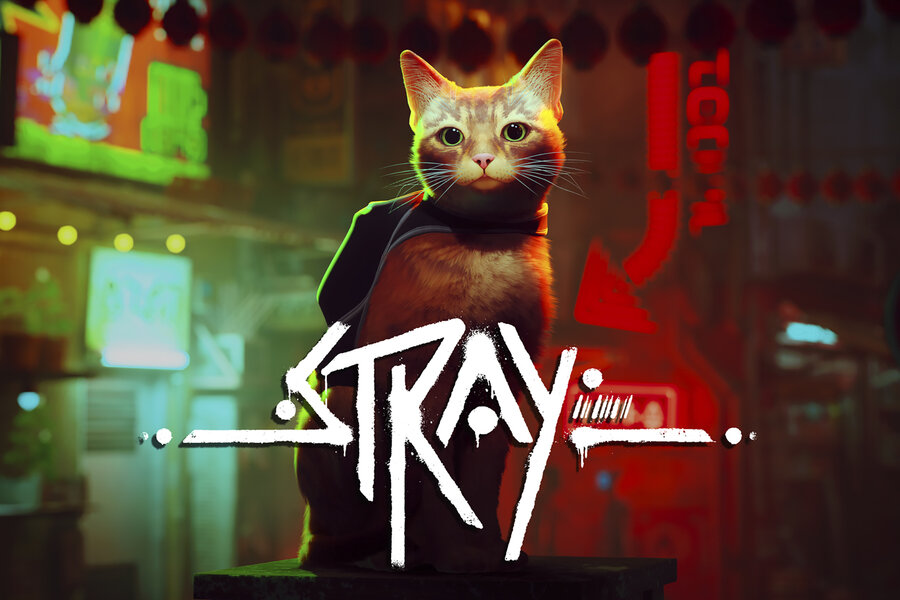How a video game kitty is helping real cats find homes
Loading...
| New York
The virtual cat hero from the new video game sensation “Stray” doesn’t just wind along rusted pipes, leap over unidentified sludge, and decode clues in a seemingly abandoned city. The daring orange tabby is helping real world cats as well.
Thanks to online fundraising platforms, gamers are playing “Stray” while streaming live for audiences to raise money for animal shelters and other cat-related charities. Annapurna Interactive, the game’s publisher, also promoted “Stray” by offering two cat rescue and adoption agencies copies of the game to raffle off and renting out a New York cat cafe.
Livestreaming game play for charity isn’t new, but the resonance “Stray” quickly found from cat lovers is unusual. It was the fourth most watched and broadcast game on the day it launched on Twitch, the streaming platform said.
Viewers watch as players navigate the adventurous feline through an aging industrial landscape doing normal cat stuff – balancing on railings, walking on keyboards, and knocking things off shelves – to solve puzzles and evade enemies.
About 80% of the game’s development team are “cat owners and cat lovers” and a real-life orange stray as well as their own cats helped inspire the game, one creator said.
“I certainly hope that maybe some people will be inspired to help actual strays in real life – knowing that having an animal and a companion is a responsibility,” said producer Swann Martin-Raget, of the BlueTwelve gaming studio in Montpellier, in southern France.
When Annapurna Interactive reached out to the Nebraska Humane Society to partner before the game’s launch on July 19, they jumped at the chance, marketing specialist Brendan Gepson said.
“The whole game and the whole culture around the game, it’s all about a love of cats,” Mr. Gepson said. “It meshed really well with the shelter and our mission.”
The shelter got four copies of the game to give away and solicited donations for $5 to be entered into a raffle to win one. In a week, they raised $7,000, Mr. Gepson said, with the vast majority of the 550 donors being new to them, including people donating from Germany and Malta. The company also donated $1,035 to the shelter.
“It was really mutually beneficial,” Mr. Gepson said. “They got some really good PR out of it and we got a whole new donor base out of it.”
Annapurna also bought out Meow Parlour, the New York cat cafe and adoption agency, for a weekend, as well as donating $1,000. Visitors who made reservations could buy “Stray” themed merchandise and play the game for 20 minutes while surrounded by cats. (The game also captivates cats, videos on social media show.)
Jeff Legaspi, Annapurna Interactive’s marketing director, said it made sense for the game’s launch to do something “positively impactful and hopefully bring more awareness to adopting and not shopping for a new pet.”
Annapurna declined to disclose sales or download figures for the game, which is available on PlayStation and the Steam platform. However, according to Steam monitor SteamDB, “Stray” has been the No. 1 purchased game for the past two weeks.
North Shore Animal League America, which rescues tens of thousands of animals each year, said it hadn’t seen any increase in traffic from the game but they did receive more than $800 thanks to a gamer.
In a happy coincidence, the shelter had just set up a profile on the platform Tiltify, which allows nonprofits to receive donations from video streams, the week the game launched. The player channeled donations to the shelter, smashing her initial goal of $200.
“We are seeing Tiltify and livestreaming as this whole new way for us to engage a whole different audience,” said Carol Marchesano, the rescue’s senior digital marketing director. Usually, though, organizations need to reach out to online personalities to coordinate livestreams, which can take a lot of work, she said.
About nine campaigns on Tiltify mention the game “Stray,” the company’s CEO Michael Wasserman said. JustGiving, which also facilitates charity livestreams, said it identified two campaigns with the game.
For his part, Mr. Gepson from Nebraska reached out to an Omaha resident who goes by the name TreyDay1014 online to run a charity livestream. Trey, who asked that his last name not be used, has two cats, one of which he adopted from the shelter.
Last week, he narrated to viewers watching live on the platform Twitch as his cat character batted another cat’s tail and danced along railings.
“If I found out my cat was outside doing this, I’d be upset,” Trey said, as his character jumped across a perilous distance. Moments later, a rusty pipe broke, sending the tabby down a gut-wrenching plunge into the darkness.
“That is a poor baby,” Trey said somberly, “but we are okay.”
A $25 donation followed the fall, pushing the amount raised by Trey for the Nebraska shelter to over $100 in about 30 minutes. By the end of four and a half hours of play, donations totaled $1,500. His goal had been to raise $200.
“This has opened my eyes to being able to use this platform for a lot more good than just playing video games,” Trey said.
This story was reported by The Associated Press. AP business writer Matt O’Brien contributed to this report.







